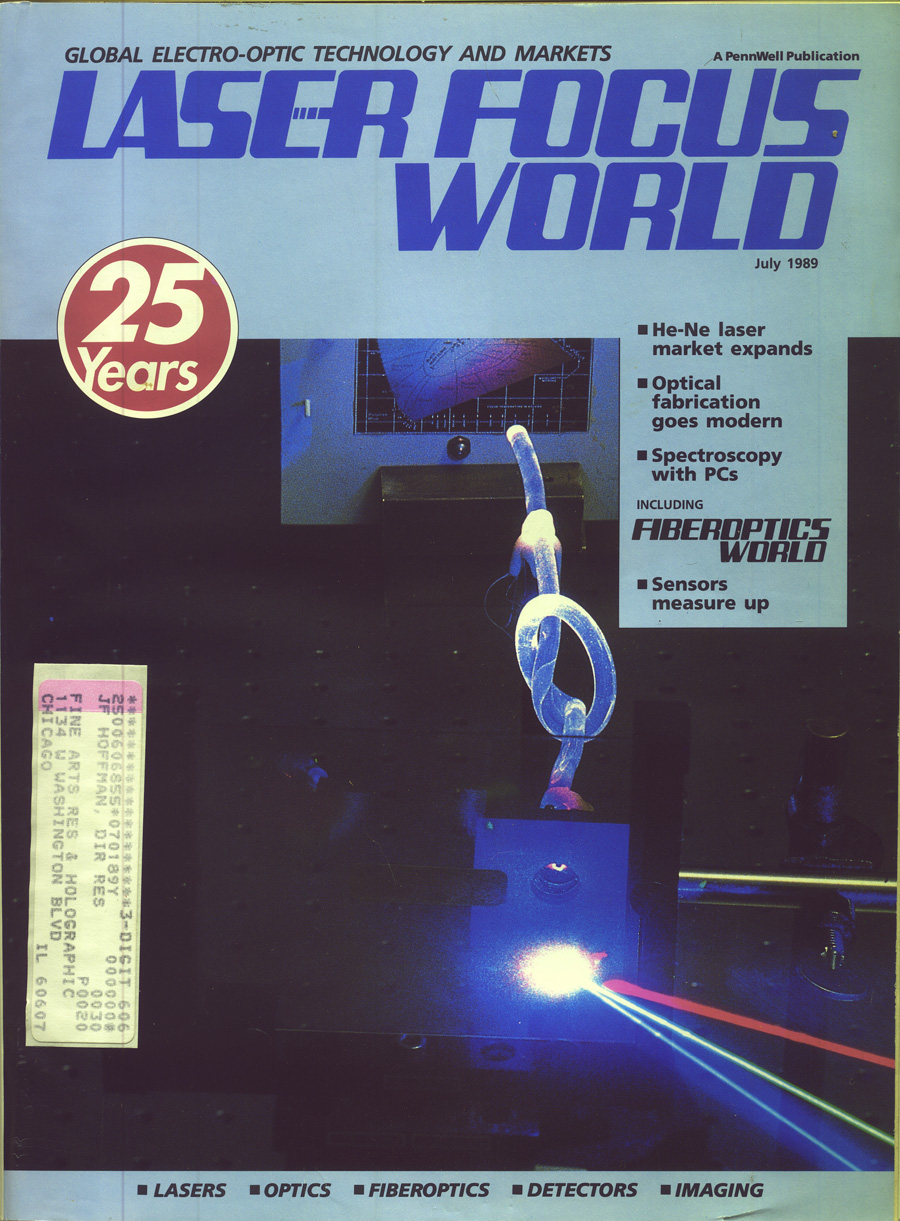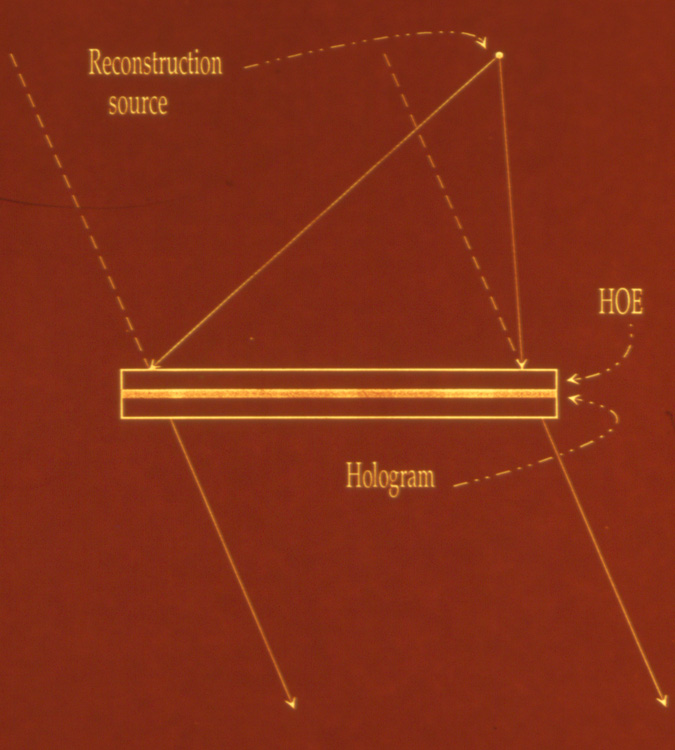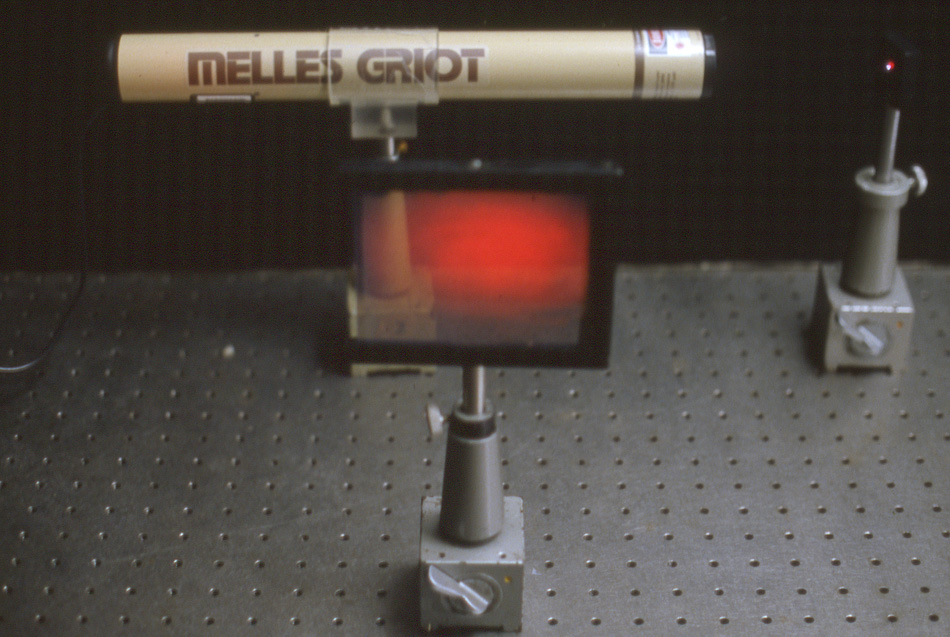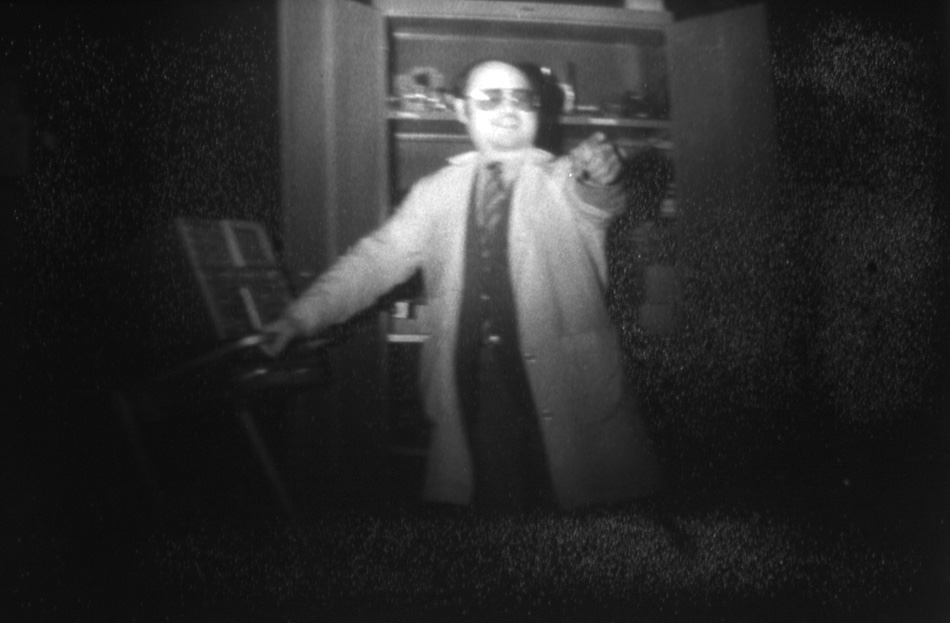
This obscure paper presents a veritable cornucopia of ideas for the use of Holographic Optical Elements (HOE's) to be used in the holography lab, or in conjunction with other holograms. Dr. Jeong came up with most of the ideas, but I was the one who shot the proof of existence holograms for his presentation in Bulgaria, along with the slides he presented.
A photograph of the most colorful one, the HOE to combine red, green and blue lasers into a white beam for color holography, (Figure 2 in the paper) was on the cover of Laser Focus magazine.

Incidentally, this is how Liti Holographics combines three laser beams in their full color holo kit.
Here are some images of the "Hologram Viewer HOE" from the paper:


The holographic portrait TJ is referring to is the one I shot fo him when I worked at FermiLab (when the cat's away, the mice will play!) known as "The Doctor is In", available from Integraf. It was shot with the largest pulsed ruby laser ever made for holography by JK Lasers of Rugby, England, a 4 rod 25 Joule monster, but only about 3 Joules were required to light up the laser lab. The hologram was shot at 694 nm wavlength, and the reference path was about 3 meters. (This was no toy train on a table layout, but real big photo studio stuff!)
Here is a set up for viewing the hologram, using a He-Ne laser very close to the hologram.

And here is the image, TJ has been shrunk from the close reference, plus there is some obvious astigmatism going on.

Sorry about the schmutz on the slide!
The HOE was added, the camera was left at the same distance from the hologram, but had to be refocused as the image moves back from the holo plate plane,

The HOE had been made by interfering a quick expanding beam 25 cm from the holo plate, with one leisurely expanding from 1000 cm away, at 633 nm. Theoretically correction for the wavelength mismatch could be made, practically it would be a lot of work.